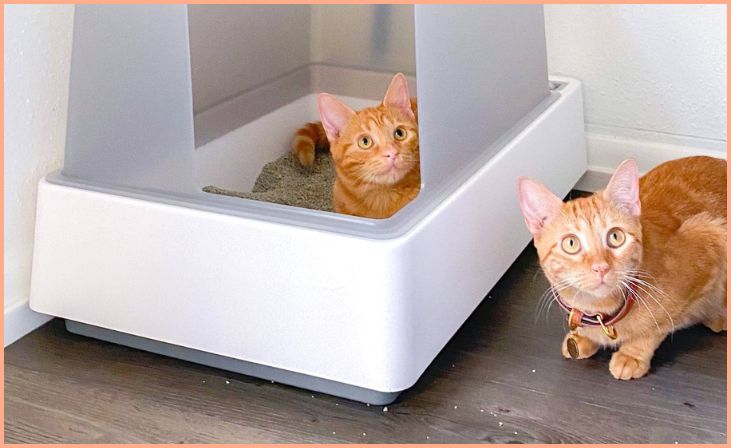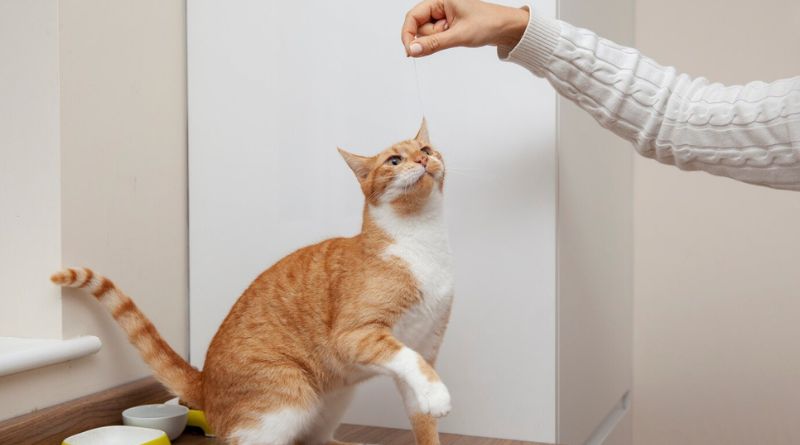Teaching a stubborn cat to use a litter box can indeed present quite a challenge, but fear not, for success is within your reach. With the right approach and proven techniques, you can transform your feline companion into a litter box pro. In this comprehensive article, we are dedicated to offering you a treasure trove of wisdom – 10 invaluable tips that will guide you through the intricate art of litter box training. Whether you’re a novice cat owner embarking on this journey for the first time or a seasoned pet parent dealing with a particularly obstinate cat, our expert advice will serve as your beacon of hope, illuminating the path to overcoming this common feline conundrum with unparalleled ease.
Teaching A Stubborn Cat: 10 Tips For Successful Litter Box Training
Choose the Right Litter Box:

Selecting the appropriate litter box is the foundation of successful litter box training. Cats come in various sizes, so it’s crucial to choose a box that suits your cat’s size and habits. The box should be spacious enough for your cat to comfortably turn around, dig, and cover their waste. Some cats prefer covered boxes for privacy, while others prefer open ones. Pay attention to your cat’s preferences.
Also Read:- Keeping Your Indoor Cat Happy
Select the Right Litter:
Cats are particular about the type of litter they use. Litter comes in different textures and materials, such as clumping, non-clumping, clay, silica gel, or natural alternatives like pine or corn. Experiment with different litters to discover which one your cat prefers. Some cats like the softness of clumping litters, while others may prefer the texture of non-clumping varieties. The right choice can make a significant difference in your cat’s acceptance of the litter box.
Find the Right Location:
Where you place the litter box is crucial for your cat’s comfort and success in using it. Choose a quiet and accessible location in your home. Cats appreciate privacy when using the box, so avoid high-traffic areas or places with loud noises. A tranquil corner of a room or a dedicated bathroom often works well.
Gradual Introduction:
If your cat is resistant to the new litter box, it’s a good idea to introduce it gradually. Place the new litter box alongside the old one, allowing your cat to become familiar with the new box over time. Cats can be creatures of habit, and a sudden change may deter them from using the new box. Gradual introduction minimizes stress.
Positive Reinforcement:

When your cat uses the litter box as intended, offer praise and rewards. Positive reinforcement can go a long way in encouraging the desired behavior. You can give your cat treats, affection, or even playtime as a reward for using the litter box. This associates the litter box with positive experiences.
Clean Regularly:
Cats are more likely to use a clean litter box. It’s essential to scoop waste daily and change the litter regularly to keep it fresh and appealing. Cats have a heightened sense of smell, and a dirty box can be a significant deterrent.
Eliminate Odors:
Speaking of smells, cats are sensitive to odors. Ensure the litter box area doesn’t have lingering odors by using odor-neutralizing products or an air purifier. A clean, odor-free environment is more inviting for your cat.
Patience is Key:
Litter box training can be a test of patience, especially with stubborn cats. Avoid scolding or punishing your cat if they have accidents. This can create anxiety and worsen the problem. Instead, maintain a calm and patient approach.
Observe Your Cat:
Pay close attention to your cat’s behavior. They may have preferences for certain times of the day when they like to use the litter box. Observing your cat’s habits can help you anticipate when they may need to use the box and make the process more predictable.
Consult a Vet:

If your cat continues to have issues with the litter box despite your efforts, it could be a sign of an underlying medical problem. In such cases, it’s essential to consult your vet to rule out any health issues that might be affecting your cat’s ability to use the litter box correctly.
Also Read:- Maine Coon Mix Characteristics
Conclusion
Training a stubborn cat to use a litter box can be a challenging but ultimately rewarding endeavor. It demands a combination of patience, understanding, and unwavering consistency. Cats, as known for their independent nature, may not always readily embrace the idea of a designated bathroom space. However, with the right approach and these ten expert tips, you’ll be well-equipped to guide your feline companion toward becoming a litter box aficionado.
First and foremost, patience is your greatest ally in this journey. Each cat is unique, with its own personality and quirks. Some may take to litter box training quickly, while others might require more time to adjust. Understand that setbacks are part of the process, and maintaining a calm, patient demeanor is essential. The pace at which your cat adapts to the new routine should be respected, and small victories celebrated along the way.
Understanding your cat’s behavior is crucial for successful training. Cats communicate through their actions, and observing their cues will help you anticipate when they need to use the litter box. Recognizing signs such as scratching, sniffing, or circling can guide you in gently directing your cat to the appropriate spot.
FAQs
A: The time it takes to litter train a cat varies, but it can take a few weeks to a few months. Be patient and consistent in your efforts.
A: If your cat is resistant to using the litter box, consult with a veterinarian to rule out any medical issues. Then, focus on the tips provided in this article.







